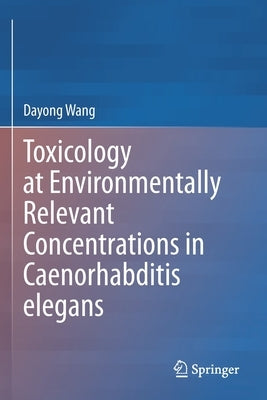Description
Toxicity Induction of Toxicants at Environmentally Relevant Concentrations.- 2 Response of Oxidative Stress Related Molecular Signals to Toxicants at Environmentally Relevant Concentrations.- 3 Response of Insulin Signalling Pathway to Toxicants at Environmentally Relevant Concentrations.- 4 Response of MAPK Signalling Pathways to Toxicants at Environmentally Relevant Concentrations.- 5 Response of Development Related Signalling Pathways to Toxicants at Environmentally Relevant Concentrations.- 6 Response of Metabolism Related Signalling Pathways to Toxicants at Environmentally Relevant Concentrations.- 7 Response of Protective Response Related Signalling Pathways to Toxicants at Environmentally Relevant Concentrations.- 8 Response of Neurotransmission Related Molecular Signals to Toxicants at Environmentally Relevant Concentrations.- 9 Response of G Protein-Coupled Receptors and Ion Channels to Toxicants at Environmentally Relevant Concentrations.- 10 Epigenetic Control of Response to Toxicants at Environmentally Relevant Concentrations.- 11 Molecular Networks in Different Tissues in Response to Toxicants at Environmentally Relevant Concentrations.
Author: Dayong Wang
Publisher: Springer
Published: 01/22/2023
Pages: 360
Binding Type: Paperback
Weight: 1.16lbs
Size: 9.21h x 6.14w x 0.78d
ISBN13: 9789811667480
ISBN10: 9811667489
BISAC Categories:
- Medical | Public Health
- Medical | Pharmacology
Author: Dayong Wang
Publisher: Springer
Published: 01/22/2023
Pages: 360
Binding Type: Paperback
Weight: 1.16lbs
Size: 9.21h x 6.14w x 0.78d
ISBN13: 9789811667480
ISBN10: 9811667489
BISAC Categories:
- Medical | Public Health
- Medical | Pharmacology
About the Author
Dr. Dayong Wang is a professor at the Medical School, Southeast University, China. He obtained his Ph.D. from Peking University in 2001 and completed his post-doctoral training at the University of Toronto from 2002 to 2004. His research focuses on toxicology and pathology using Caenorhabditis elegans as a model animal, fields in which he has published more than 250 research articles. Dr. Wang has published five books with Springer, all of which are centered on the toxicology in Caenorhabditis elegans.

